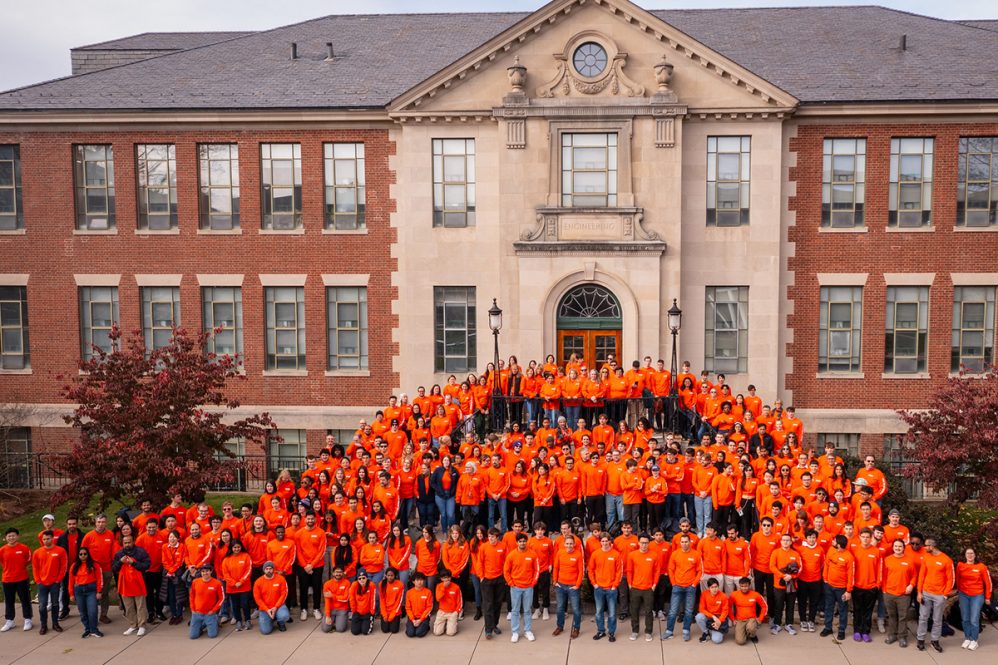This November, the former School of Engineering at UConn is celebrating a new milestone with the designation of being renamed the College of Engineering (CoE). In this article we look back at, and to the future of, the College’s 140-plus year history of producing highly educated graduates who bolster Connecticut’s high-tech economy.
Present Day
The College of Engineering currently offers instruction to more than 3,600 undergraduates, 900 graduate students, and 600 students enrolled in professional education programs through the new Center for Advanced Engineering Education. Undergraduates may pursue majors in 14 different disciplines from biomedical, computer, civil, electrical, environmental, and mechanical engineering to robotics, data science and materials science and engineering.
In 2023, more than 1,000 students received degrees from the CoE, with 66% of all graduates working in Connecticut. This, combined with the more than $68 million in total research expenditures and $800,000 in scholarship funds awarded, contributes to UConn being ranked No. 26 of public universities in the nation by U.S. News & World Report.
“The College of Engineering is a cornerstone of academic excellence, groundbreaking research, and impactful community and industry engagement,” said Dean of Engineering and Professor of Mechanical Engineering Kazem Kazerounian. “We’re extremely proud of the high-quality engineering education that UConn provides to our students.”
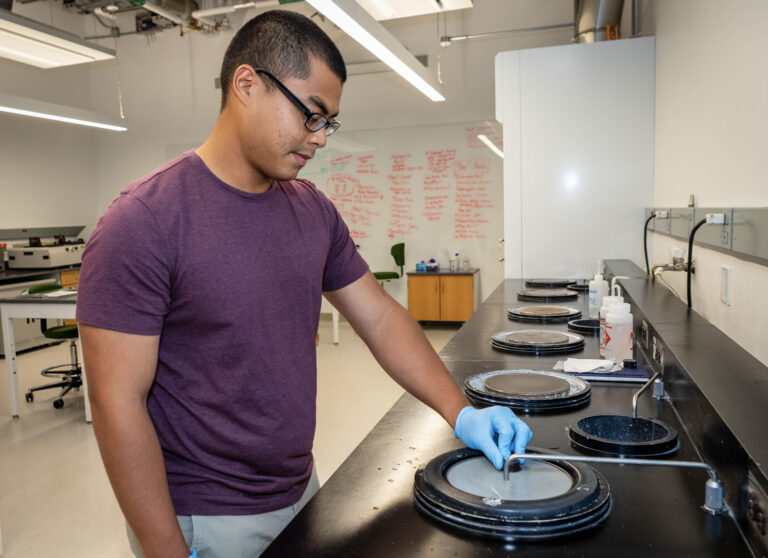
While elevating the former School of Engineering to the College of Engineering, the Board of Trustees also approved two internal changes: the Department of Computer Science and Engineering is now the School of Computing; and the Department of Mechanical Engineering is now the School of Mechanical, Aerospace, and Manufacturing Engineering to better reflect the educational options offered under those fields.
Kazerounian, who has taught engineering classes at UConn for 39 years, noted that the new name will help enhance its visibility among peer institutions, streamline operations, encourage specializations, and promote excellence within the affiliated programs, centers, and institutes.
“It also provides the flexibility needed to support future growth and innovation in education, research, and community engagement,” Kazerounian wrote. “Becoming a College aligns with the aspirations of our faculty and sets the stage for our continued growth and success.”
The College of Engineering currently employs 147 tenured and tenure-track faculty including President Radenka Maric and 35 teaching faculty, 61 deanery and academic staff members, and 29 research support employees.
Prominent ENG alumni include Priceline.com co-founder T. Scott Case ’92; NASA astronauts Rick Mastracchio ’82 and Franklin Chang-Diaz ’73; retired vice president of DuPont and president of Chemours Mark Vergnano ’86; Savant Systems CEO Bob Madonna ’82; Exxon Mobile Corp. retired vice president of engineering and research Robert Mastracchio ’64, ’66 MS; former CEO of GE Energy John Krenicki ’84, and many more.
“As higher education evolves, and the diversity and size of our programs increase, it has become clear that this transition is timely and essential for our continued growth and success,” Kazerounian said.
Read more in this UConn Today article.
Looking Back
According to the book, A History of Engineering Education at the University of Connecticut: 1881-1995, edited by Professor Emeritus Winthrop Hilding, “some phase of engineering has been offered” since the founding of the University in 1881.
The Storrs Agriculture School, which UConn was first named, offered courses in surveying, mechanical drawing, physics, chemistry, and mathematics, and by 1901, the School instituted a two-year course in mechanic arts.
The first four-year curriculum, leading to a Bachelor of Science in mechanical engineering, began in 1916. Three years later, the School established the Division of Mechanical Engineering with John Fitts—a member of the Class of 1897—leading the program as the first engineering professor and dean.
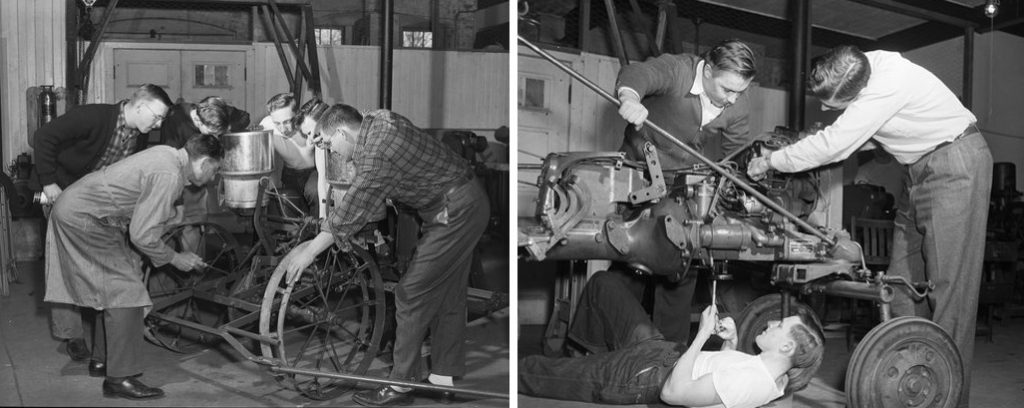
In 1935, the Division of Mechanical Engineering became the Division of Engineering, offering options in courses in civil, electrical, and mechanical engineering, and in 1940, the Division was renamed The School of Engineering, offering a Bachelor of Science in Engineering (BSE) from the newly named University of Connecticut.
In A History of Engineering Education, Hilding notes that the first 60 years (1881-1940) of engineering instruction “progresses at an exceeding slow pace” with only five students graduating with a degree in 1939. But even amid the Great Depression, and since 1940, “progress and development of the School of Engineering into one of the top-ranked institutions in the nation has been remarkable,” he wrote.
Among the early alumni were Daniel Noble ’29, chairman of Motorola Radio Corp.’s Science Advisory Board, and John Hawkins ’38, who assisted with the design of the Hubble space telescope.
By 1941, the School of Engineering offered fully accredited Bachelor of Science programs in civil engineering, electrical engineering, and mechanical engineering. The first Master of Science degrees in all three fields were awarded in 1943, and the first Ph.Ds in 1962-64.
The school of Engineering hit another growth spurt in the 1950-70s with the establishment of the Department of Chemical Engineering in 1959; Aerospace Engineering Department in 1963; a Biological (later Biomedical) Engineering program in 1965; the Department of Metallurgy in 1967, and the Electrical Engineering and Computer Science Department in 1974. By the 1990s, UConn’s School of Engineering was awarding almost half of all engineering degrees in the state.
Initially, engineering courses were taught in the basement of the old Whitney Hall on N. Eagleville Road, across from the portico of the Storrs Congregational Church. This building is no longer standing. According to Hilding, two dozen students were enrolled in the early 1900s where they had access to a drafting room, machines, and woodworking shops.
In 1920, the program outgrew Whitney Hall, and the Division moved to the 10,000-square-foot Mechanic Arts Building, which would become engineering’s first ‘official’ home. This structure is currently occupied by the Islamic Center on N. Eagleville Road.
Nineteen years later, the School of Engineering moved to a newly completed, 48,776-square-foot building known as Engineering I, which was renamed the Francis L. Castleman, Jr. Building in 1970 after the late dean who died in office.
In 1957, the Engineering II Building was completed and included a Computer Center on the second floor, utilizing an IBM 1620 machine.
In 1968, the Engineering III Building opened, followed by the Materials Science Building in 1970, the United Technologies Engineering Building in 1987, the Longley Building in 1991, and the Information Technologies Engineering Building in the early 2000s.
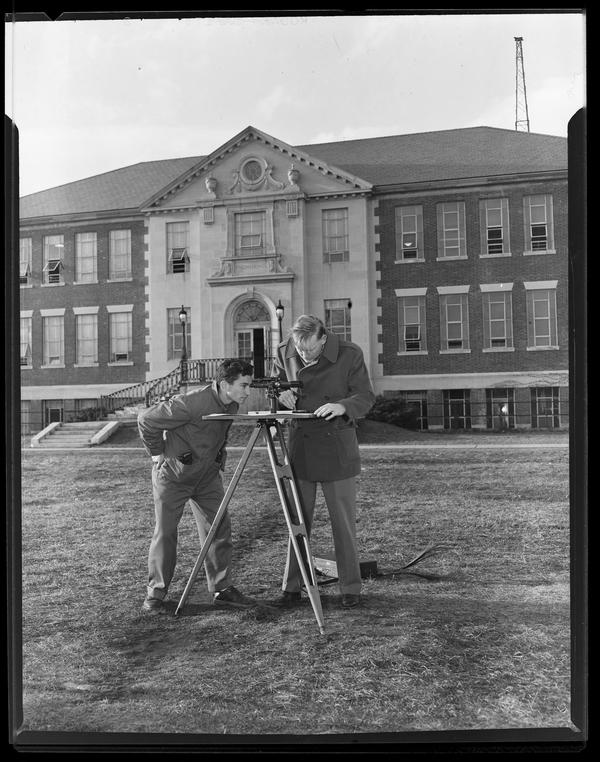
In 2014, UConn began its Next Generation Connecticut (NextGenCT) initiative to significantly expand the University’s educational and research work in STEM fields. With engineering enrollment doubling, UConn opened the Engineering and Science Building in 2018, and the Science 1 building in 2023 to help alleviate engineering programs busting at the seams. In addition, the Innovation Partnership Building opened in 2018 at the UConn Tech Park, fostering industry-academic partnerships for research, innovation technology commercialization and job growth for the State of Connecticut.
The Institute of Materials Science and the Materials Science and Engineering Department moved to the new, state-of-the-art Science 1 building this year after spending 50 years in the north wing of the Edward V. Gant Science Complex.
“Collectively, this is a profound improvement which will absolutely improve the quality of the undergraduate experience, dramatically improve materials education for our undergraduates and graduates, and make us even more of a destination for industry and other worldwide collaborators,” said MSE Department Head and Professor Bryan Huey said.
Back to the Future
To ensure continued growth in the College of Engineering, Kazerounian wants to focus on three major pillars: Developing successful students, maintaining research excellence, and contributing to the economic output and development in the state of Connecticut.
“Through investment in campus resources, a focus on entrepreneurial ventures, a strong connection with industry partners, and a drive to innovate, the College has been very successful at advancing our three pillars; and giving the State of Connecticut a strong return on its investment,” he said in his Dean’s Message. “Connecticut and its engineering community look to UConn Engineering for leadership, intellectual capital, and outstanding graduates who will ensure the economic future of our state.”
Looking forward, the CoE aims to develop the next generation of creative and innovative engineers and bold technological solutions needed to address the grand challenges facing our society and the planet in the 21st century. Faculty are looking to achieve national and international recognition for transformative research in the key areas of manufacturing and materials; biomedical engineering and systems genomics; sustainability; complex systems engineering and resilient infrastructure; data science and cybersecurity; and engineering education, diversity and inclusion, and innovation and entrepreneurship.
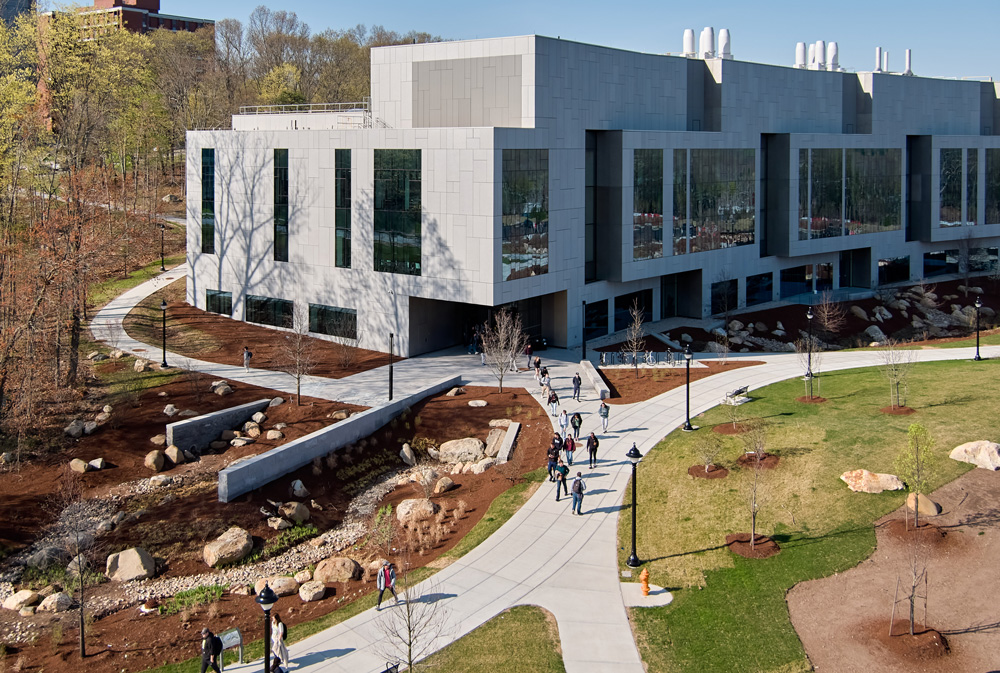
In addition, the CoE’s goals are to:
- Increase and improve graduate student applicant pool of domestic and international students
- Increase the number of high-impact scientific research/publications (e.g., Nature, Science, PNAS, and other highly impactful publication venues)
- Increase number of graduate students funded by scholarships
- Increase number of PhD students moving on to faculty positions
- Work with UConn Admissions and the Foundation to explore new sources of highly qualified students and identify scholarship opportunities that make it possible for those students to “Choose UConn,” with a goal of reaching gender parity in incoming classes by 2026
- Increase programs and initiatives to support a diverse, inclusive, equitable and life-transformative culture within the school and beyond
- Enhance public perception of engineering in the state and region
- Evolve existing and develop new experiential and life-transformational engineering education opportunities, which will instill a culture of lifelong learning
“It’s incredible to think how far we’ve come in 142 years,” said Associate Dean Daniel Burkey, Castleman Term Professor in Engineering Innovation. “As we reflect on the milestones, it is evident that the College of Engineering has become a beacon of inspiration for aspiring engineers and a hub for groundbreaking research. The institution has flourished into a dynamic and forward-thinking community that prepares students for the challenges of the future.”
